In the spring of 1945, German forces were reeling from a series of devastating defeats on the eastern and western fronts. In the west, US forces contained and repelled a German counteroffensive in the Battle of the Bulge. On March 7, units of the American 9th Armored Division captured the Ludendorff Bridge at Remagen and established a bridgehead over the Rhine River, the largest remaining obstacle confronting American forces in their drive into Germany. In the east, decimated German units retreated in the face of Soviet assaults on a front that stretched from Yugoslavia to Lithuania. Citizens of Hitler’s Third Reich also could not escape the horrors of war. Germany’s cities lay in ruins from the Anglo-American bombing campaign which dropped more than 45,000 tons of bombs on German population centers between January 1944 and January 1945.
Although in hindsight it is tempting to view March 1945 as the closing act of the war in Europe, German forces continued to inflict heavy casualties on Allied forces. On March 6, the German Army launched a final offensive near Lake Balaton in Hungary in a bid to protect valuable oil fields in the region. In the west, Germany launched thousands of V-2 rockets at targets in the United Kingdom, France, Belgium, and the Netherlands. More than 3,000 of the rockets struck Allied-held territory by March 1945, killing in excess of 4,500 people. Similarly, the British and American air campaign against Germany did not show any signs of abating in March 1945.
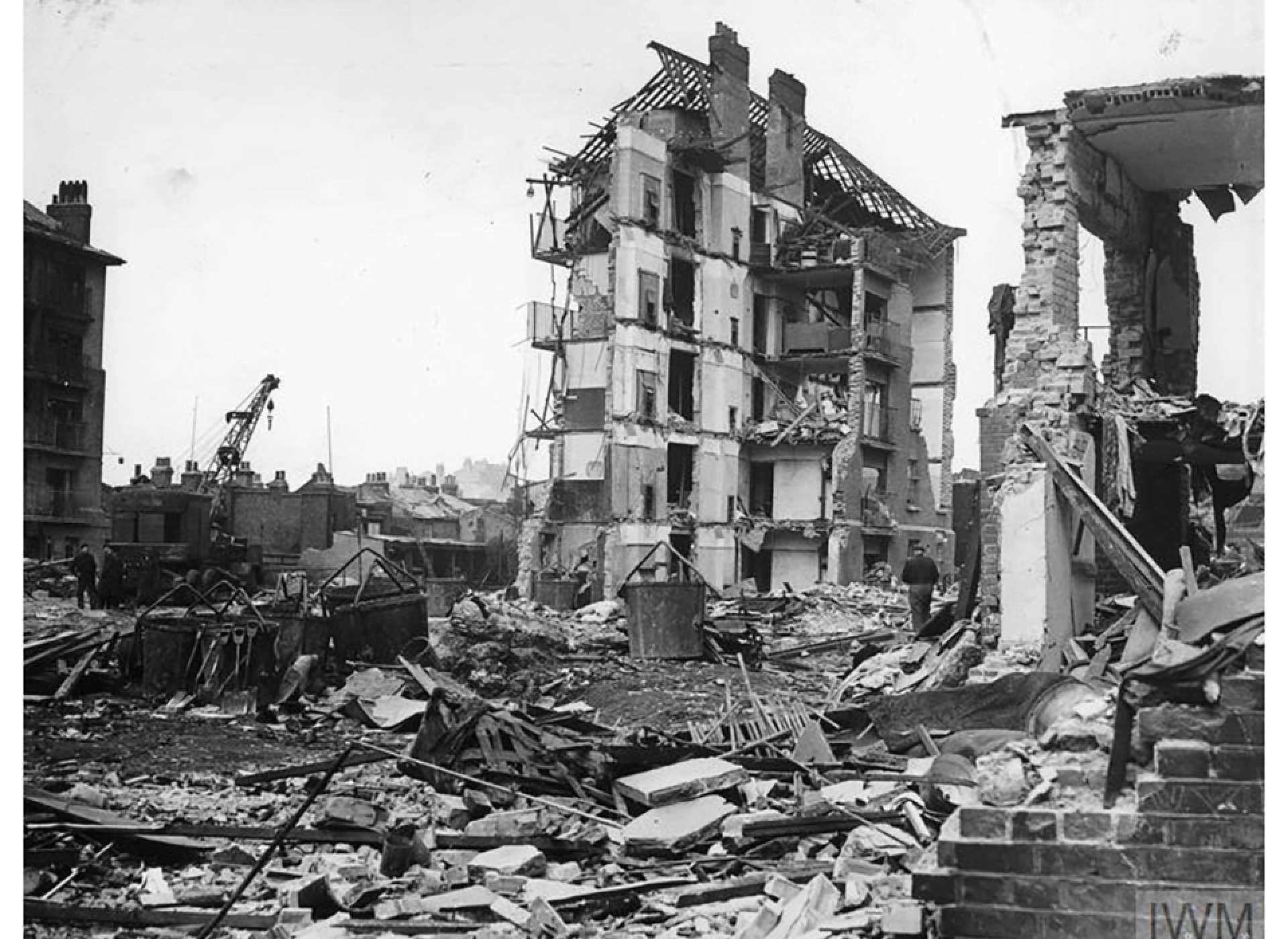
A destroyed apartment complex in East London caused by the last German V2 rocket to fall on London on March 27, 1945. Courtesy of the Imperial War Museum.
In the spring of 1945, the Anglo-American air forces launched increasingly bigger and more destructive raids on German cities. Between February 13 and February 15, American and British bombers destroyed the virtually undefended city of Dresden, Germany, killing more than 25,000 civilians. On March 11, the Royal Air Force reduced much of the city of Essen to rubble when 1,079 British aircraft dropped over 4,700 tons of bombs on the city. Simultaneously, the US Army Air Force dropped approximately 600 tons of bombs on German rail yards every month from September 1944 to April 1945. In the midst of so many devastating raids, one of the most significant air battles of the war has frequently been overlooked.
On the morning of March 18, 1,329 bombers and 733 fighters of the US Eighth Air Force formed up over England and set a course for northern Germany. The target for 1,221 of the bombers was Berlin. This mission, the largest wartime raid on Berlin, was intended to support the Russian advance by attacking rail stations and tank factories in the city.
During the previous two weeks, the American bombers had encountered little fighter resistance on their daylight bombing raids. In the pre-mission briefings on March 18, however, intelligence officers warned crews to be on the lookout for a new German jet fighter, the formidable Messerschmitt Me 262. With a top speed of 540 mph, the Me 262 was over 100 mph faster than the best American fighter of the war, the North American P-51 Mustang.
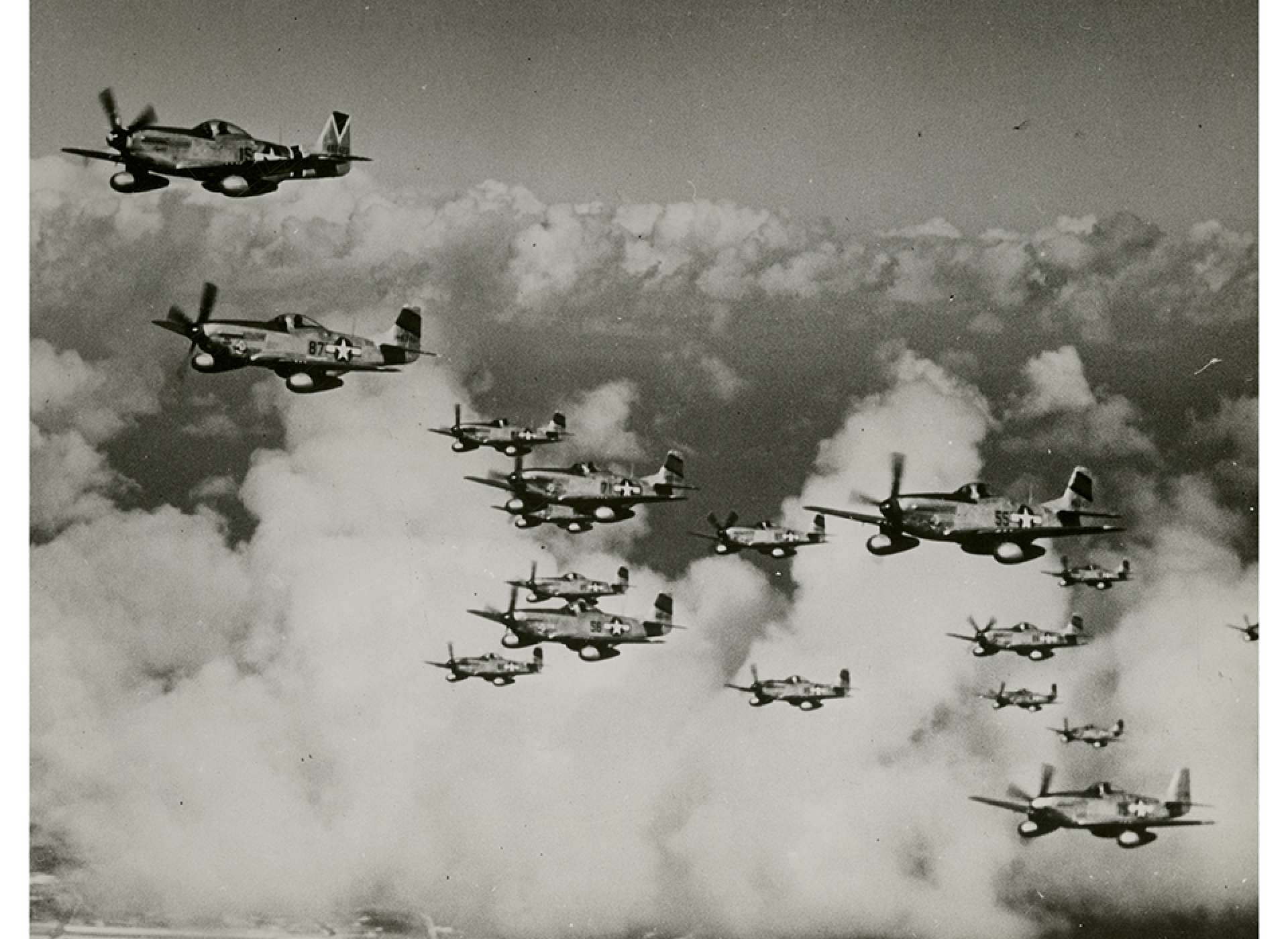
A formation of P-51 Mustang fighters in 1945. The National WWII Museum, Gift of Dylan Utley, 2012.019.243
As the American bomber fleet and its fighter escorts approached the German capital, more than 70 German fighters intercepted the invaders. Historian Donald Miller called the ensuing battle the “most tremendous air battle of 1945.” The German force consisted of three dozen jets and an equal number of piston engine fighters. Despite being outnumbered 25 to 1, the German fighters used cloud cover to evade the American fighter escort and close with the bomber formations. 30 jets from the newly formed Jagdgeschwader 7 streaked through the formation and shot down seven B-17 bombers in just eight minutes. The German jets each carried two dozen rockets slung under their wings. These projectiles could bring down a bomber with a single hit. To increase their lethality, the German fighters lined up abreast and fired their rockets into the bombers at close range. Fragments of the bombers rained down over the German countryside, while six American fighters that engaged the German defenders were also shot down.
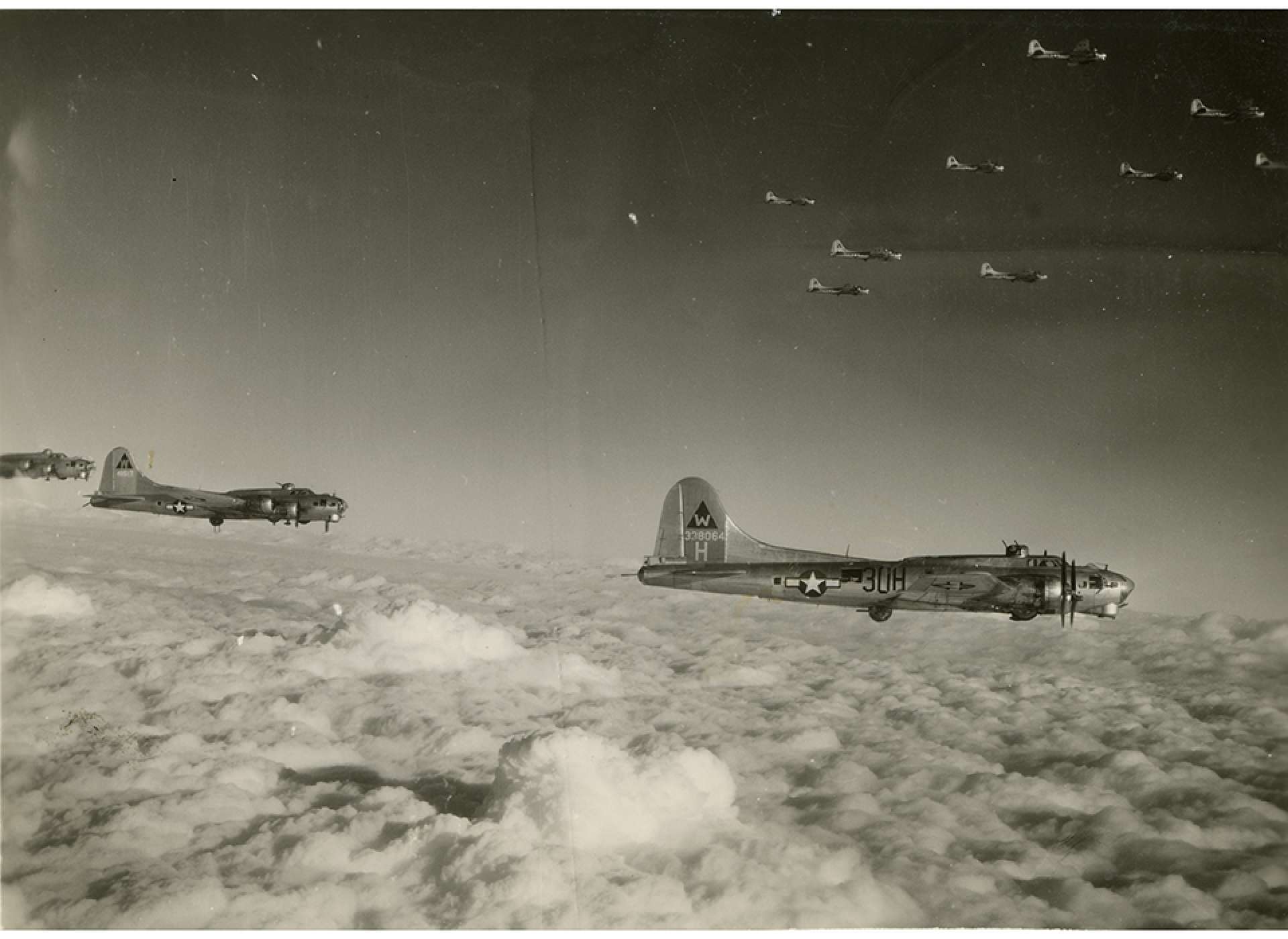
A formation of American B-17 bombers from the 398th Bomb Group over Germany. The National WWII Museum, Gift of Peggy Wallace, 2010.308.031
The armada next encountered German flak, which inflicted even more casualties. More than half of the bombers, 714 planes, sustained damage from German anti-aircraft fire. 16 suffered hits so severe that they had to crash land behind Soviet lines. In total, 24 bombers and six fighters were lost on the mission. 178 Americans were killed, wounded, or captured in the raid. The German Luftwaffe lost just three pilots.
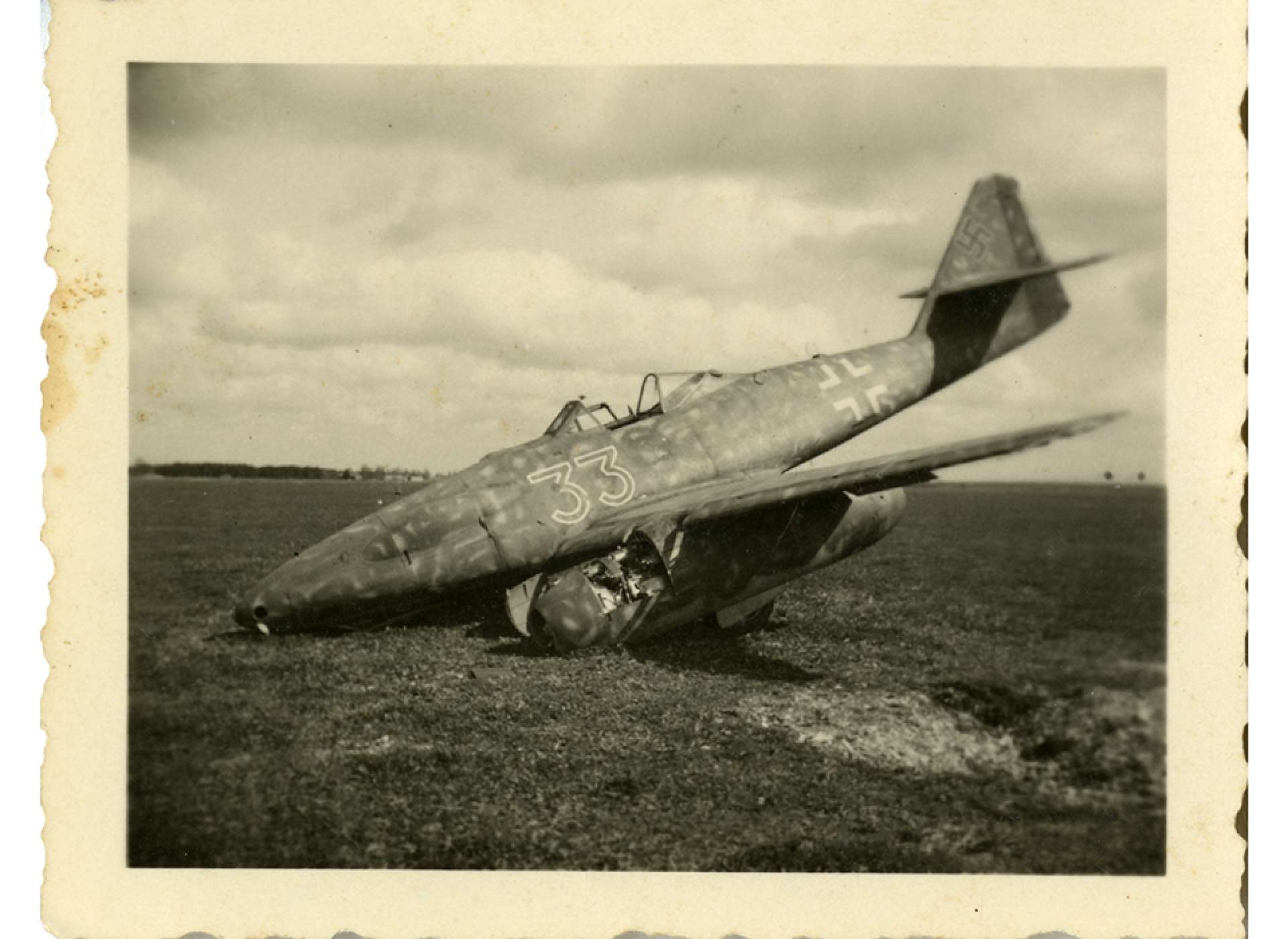
A German Me 262 jet fighter after crash landing in 1945. The National WWII Museum, Gift in Memory of Rayford Edwin Alexander, 2010.275.098
Despite the German Luftwaffe’s success, it was unable to prevent the vast majority of the American bombers from dropping their payloads on Berlin. Although the bombers targeted the city’s rail yard, their customary inaccuracy combined with the intermittent cloud cover meant that more than 3,000 tons of bombs impacted all over the city. Owing to the previous devastation of Berlin and the untold number of refugees in the city, it is impossible to know the exact number of Germans killed in the raid. Conservative estimates put German losses around 3,000 civilians.
The German Me 262 jet fighter returned the qualitative edge to Hitler’s air force in the last days of the war, and German jets shot down a total of 63 bombers in the war’s final months. Yet the belated appearance of the best fighter of the war could not prevent Germany’s ultimate defeat. On April 25, American and Soviet forces linked up on the Elbe River near Torgau, while the Soviet Army fought its way into the heart of Berlin. American and British bombers finally ran out of targets in April 1945, but they had gutted as many German cities as possible in their effort to compel Germany’s surrender.
March 18 was the largest Allied raid on Berlin during the war, yet the bombing mission rated only a single paragraph in the US Army Air Force’s official history of World War II.
One possible reason for the mission’s obscurity is that it was one of more than 350 wartime bombing missions that targeted the German capital. The postwar years have also witnessed a contentious debate over the role of airpower in bringing about Germany’s defeat.
US Army Air Force leaders in Europe commanded the most powerful strategic air force in history by the beginning of 1945, and they were determined to prove that the resources devoted to the bomber force were justified. This goal was all the more important since their demands on American manpower contributed to a dire shortage of infantrymen in Europe in the final six months of the war. In addition, Army Air Force leaders looked ahead to their postwar fight to become an independent service and secure appropriations for a permanent strategic bomber force. Consequently, American air commanders exhibited particular zeal in their spring 1945 campaign. Historian Tami Biddle argued that the United States Strategic Air Forces’ “wide-ranging targeting choices for the month of February revealed an almost desperate quest for a decisive use of strategic air power.” The same could be said of the March 18 raid, which had an undetermined impact on Germany’s defeat. Though the raid had a strategic justification, there was also no denying the psychological appeal of targeting Hitler’s capital with the full power of the US Eighth Air Force, the largest bomber force in American history.
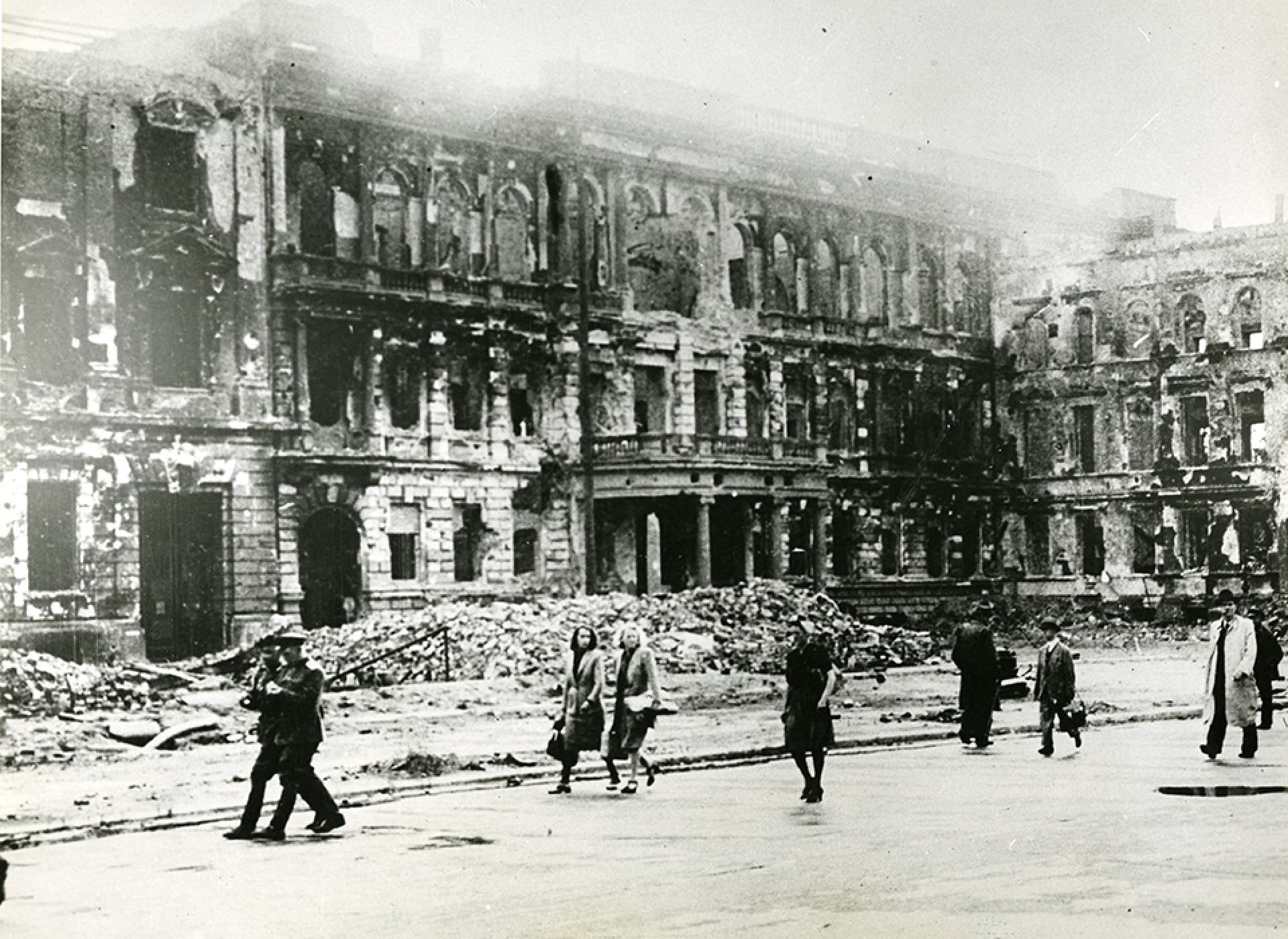
German civilians and Allied servicemen walk past a row of destroyed buildings in Berlin after Germany's surrender on May 8, 1945. The National WWII Museum, Gift of Dylan Utley, 2012.019.480
Tyler Bamford
Tyler Bamford was the Sherry and Alan Leventhal Research Fellow at the Institute for the Study of War and Democracy at The National WWII Museum from 2019-2021. He obtained his PhD in history from Temple University and his BA in history from Lafayette College.
Cite this article:
MLA Citation:
APA Citation:
Chicago Style Citation:
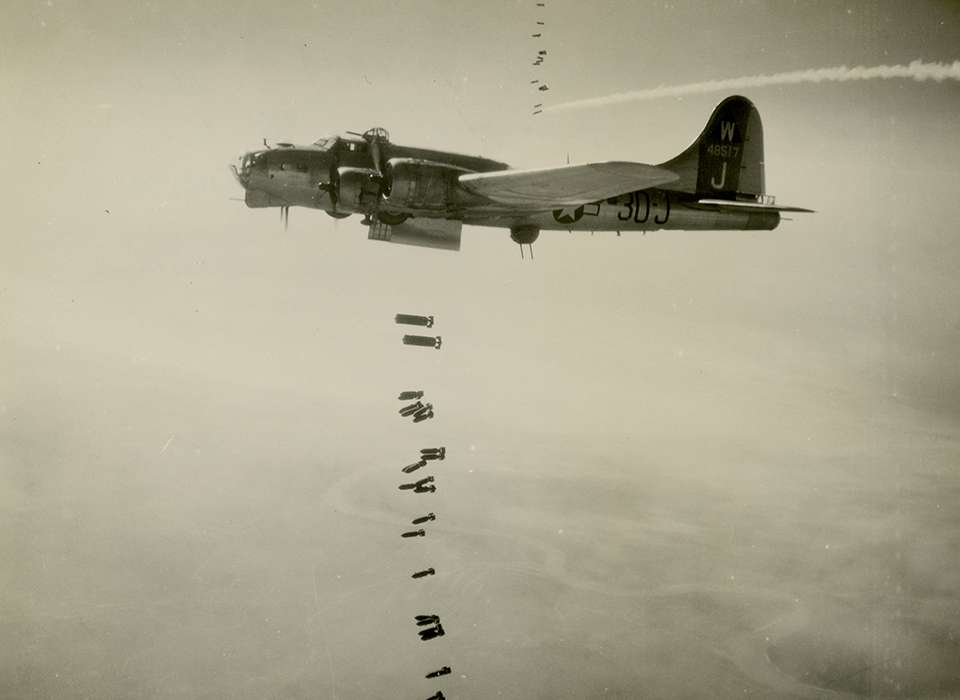




![Max Fuchs, New York City cantor, sings as Rabbi Sydney [sic] Lefkowitz, Richmond, VA, conducts the first Jewish services from Germany.](/sites/default/files/styles/max_650x650/public/2025-10/image1.jpg)



